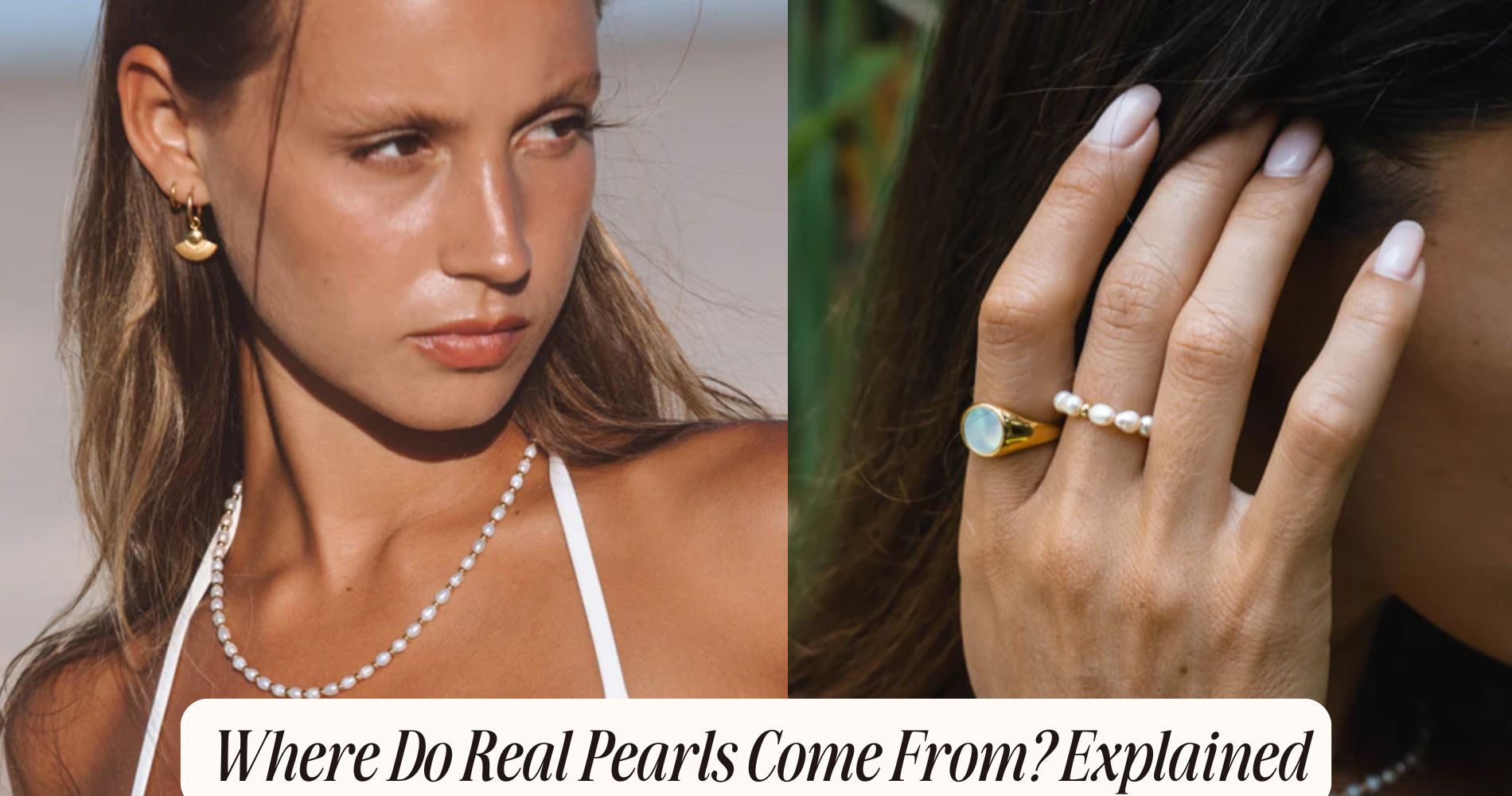
Where Do Real Pearls Come From? Explained
Where do real pearls come from? Real pearls come from mollusks, mainly oysters and freshwater mussels. When an irritant enters their shell, the mollusk secretes nacre, creating layers around it for protection. This process takes several years, resulting in a lustrous pearl formed from concentric nacre deposits. There are both natural and cultured pearls; natural ones form spontaneously in the wild, while cultured pearls are created under controlled conditions. The ecosystem impacts the quality and characteristics of the pearls, influenced by factors like water quality and temperature. If you're curious about the various types and cultivation processes, there's much more to uncover with our Freshwater Pearls Jewelry collection.
The Formation of Pearls
When you think about the formation of pearls, it's fascinating to realize that this process begins with an irritant entering a mollusk, such as an oyster or a mussel. The irritant can be a grain of sand, a parasite, or even a piece of shell.
In response to this irritation, the mollusk activates its biological mechanisms to protect itself. It secretes a substance called nacre, or mother-of-pearl, which is composed mainly of aragonite and conchiolin.
Over time, layers of nacre accumulate around the irritant, following natural processes that can take several years. This layering isn't random; it's a structured response dictated by the mollusk's immune system and environmental factors.
The mollusk continuously deposits nacre in concentric layers, which not only encapsulates the irritant but also leads to the formation of a lustrous pearl.
The entire process highlights the intricate interplay between biological mechanisms and environmental conditions. Understanding these factors provides insight into the unique characteristics of pearls, revealing how living organisms can create something so beautiful and complex from a simple irritant.
Types of Pearls
Pearls can be categorized into several distinct types based on their origin, shape, and luster, each possessing unique attributes that appeal to collectors and jewelry enthusiasts alike.
Natural pearls form spontaneously in the wild, while cultured pearls are cultivated under controlled conditions, often leading to higher availability.
You'll find two primary categories of cultured pearls: freshwater pearls, which are typically less expensive and come from mussels, and saltwater pearls, sourced from oysters and often considered more prestigious.
Within these categories, pearls can take on various shapes. Round pearls are the most sought after for their symmetry, while baroque pearls display irregular forms, showcasing their uniqueness.
Additionally, dyed pearls are treated to enhance color, making them popular for trendy jewelry designs.
Exotic pearls, such as Tahitian or South Sea pearls, offer distinct hues and sizes, further enriching the market.
Each type of pearl has its distinct characteristics, influencing both value and visual appeal. Understanding these types helps you make informed choices when adding pearls to your collection or selecting them for jewelry.
Mollusks That Produce Pearls
Various types of pearls originate from specific mollusks, which play a vital role in their formation.
The primary mollusk species responsible for producing pearls are pearl oysters and freshwater mussels. Pearl oysters, belonging to the family Pteriidae, are marine mollusks that thrive in saltwater environments. They secrete nacre, a combination of aragonite and conchiolin, which layers around an irritant, resulting in the formation of pearls. The most notable pearl oysters include the Akoya, Tahitian, and South Sea oysters, each contributing distinct pearl characteristics.
On the other hand, freshwater mussels, primarily from the family Unionidae, produce pearls in freshwater habitats. These mollusk species differ markedly from their marine counterparts, as they can create multiple pearls at once and often display a wider variety of colors and shapes due to their unique environments and internal structures.
Both pearl oysters and freshwater mussels exhibit fascinating biological processes that lead to pearl formation. Understanding these mollusks' attributes is essential for appreciating the diversity and beauty of real pearls, as well as the ecological significance they hold within their respective ecosystems.
Environments for Pearl Formation
In the depths of oceans and rivers, the environments where pearls form are fundamental to their characteristics and quality. Natural habitats, such as saltwater and freshwater ecosystems, play a significant role in the pearl formation process. Saltwater pearls typically originate from oysters found in warm, tropical waters, while freshwater pearls come from mussels inhabiting rivers and lakes.
These aquatic ecosystems provide the necessary conditions for mollusks to thrive, including water temperature, salinity, and sediment composition. Healthy, balanced ecosystems support a diverse range of microorganisms, which contribute to the overall health of the mollusks.
Factors like pollution, overfishing, and climate change can disrupt these environments, affecting the conditions essential for pearl formation.
Additionally, the presence of irritants, such as sand or parasites, within these habitats prompts mollusks to produce nacre—a substance that coats these foreign objects, eventually forming pearls.
The unique conditions of each ecosystem influence the luster, color, and shape of the pearls produced. Understanding these environments allows us to appreciate the intricate relationship between mollusks and their surroundings, highlighting the importance of preserving these aquatic ecosystems for future pearl production.
The Cultivation Process
The cultivation process of pearls involves meticulous techniques that guarantee ideal growth and quality. In pearl farming, you begin by selecting healthy mollusks, typically oysters or mussels, and placing them in controlled environments like lagoons or coastal waters.
The use of sustainable practices is essential; you ascertain the ecosystem remains balanced while optimizing conditions for pearl development.
Once you've selected the mollusks, you perform a surgical procedure called nucleation, where a small bead or piece of mantle tissue is inserted into the mollusk. This triggers the animal to secrete nacre, the substance that forms the pearl.
You must monitor water quality, temperature, and food supply closely, as these factors greatly influence growth rates and pearl quality.
After several months to years, depending on the type of pearl, you harvest the pearls. Following sustainable practices ascertains that your pearl farming operations don't deplete marine resources and contribute positively to local ecosystems.
Post-harvest, you clean and sort the pearls by size, shape, and luster, preparing them for market. This precise cultivation process is what transforms simple mollusks into the exquisite gems we admire.
Frequently Asked Questions
How Can You Tell if a Pearl Is Real or Fake?
To tell if a pearl's real or fake, you can use pearl identification techniques. Look for distinguishing features like surface imperfections, weight, and luster, which can reveal authenticity and separate genuine pearls from synthetic ones.
What Is the Lifespan of a Pearl?
A pearl's lifespan varies, typically lasting decades if kept in its natural habitat. During pearl formation, environmental factors influence longevity, so proper care guarantees your pearls maintain their beauty for as long as possible.
Can Pearls Be Dyed or Treated?
Yes, dyed pearls undergo color alteration through various techniques, enhancing their appearance. Treated pearls can be subjected to processes like bleaching or coating, improving luster and durability. These methods create beautiful, unique variations in pearl jewelry.
What Are the Ethical Concerns Surrounding Pearl Farming?
When considering pearl farming, you should focus on sustainable practices and animal welfare. Many farms don't prioritize these aspects, leading to habitat destruction and poor treatment of mollusks, raising significant ethical concerns in the industry.
How Should Pearls Be Cared for and Stored?
To care for your pearls, guarantee proper cleaning with a soft cloth after each wear. For ideal storage, keep them in a silk pouch or a lined box to prevent scratches and maintain their luster.
Conclusion
To conclude, real pearls originate from mollusks, primarily oysters and mussels, through a fascinating natural process. Understanding the types of pearls and their formation environments highlights the intricate relationship between these organisms and their habitats. The cultivation of pearls further emphasizes human ingenuity in harnessing nature's beauty. By appreciating these elements, you gain a deeper insight into the origins of pearls, enhancing your appreciation for their uniqueness and the delicate ecosystems that support their formation.








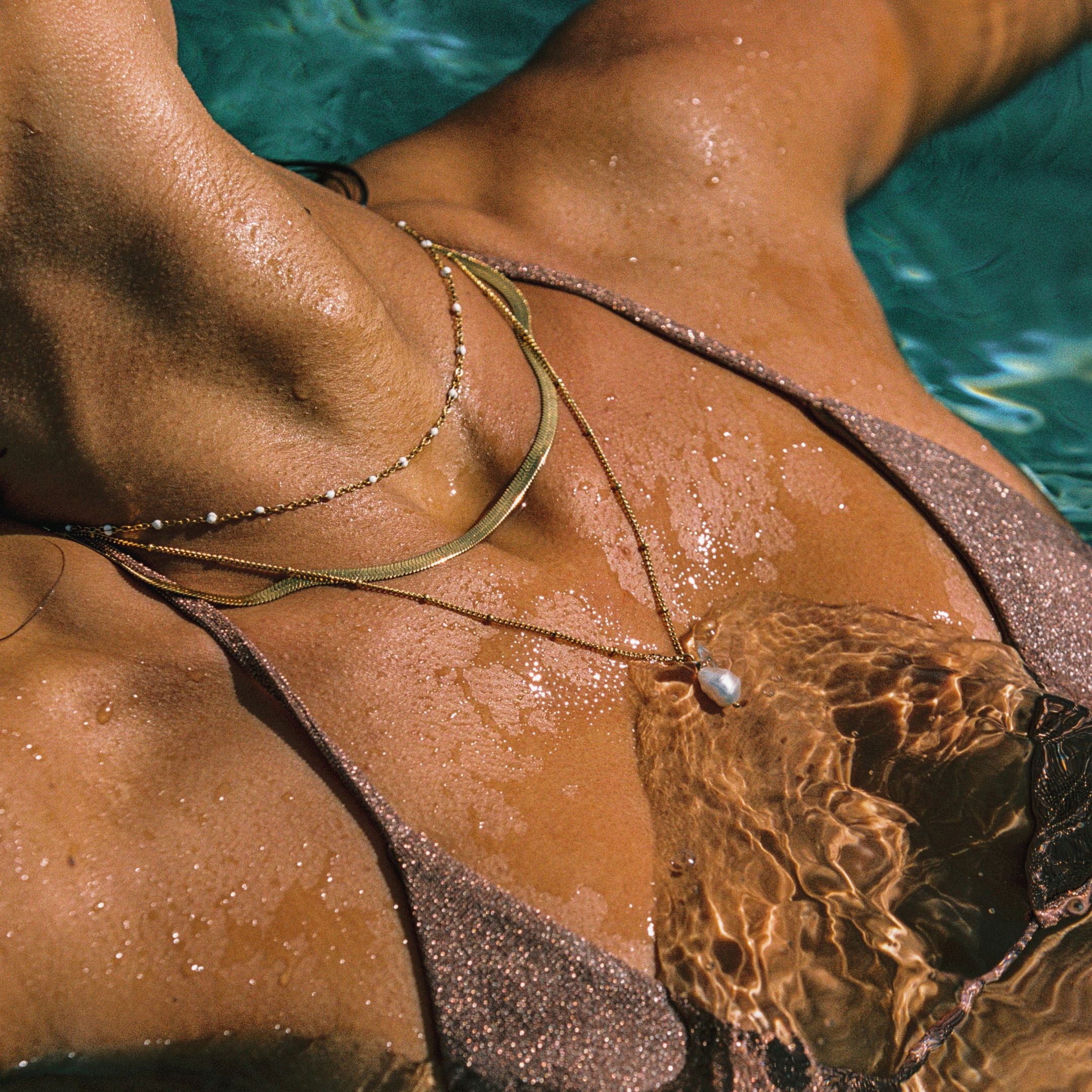

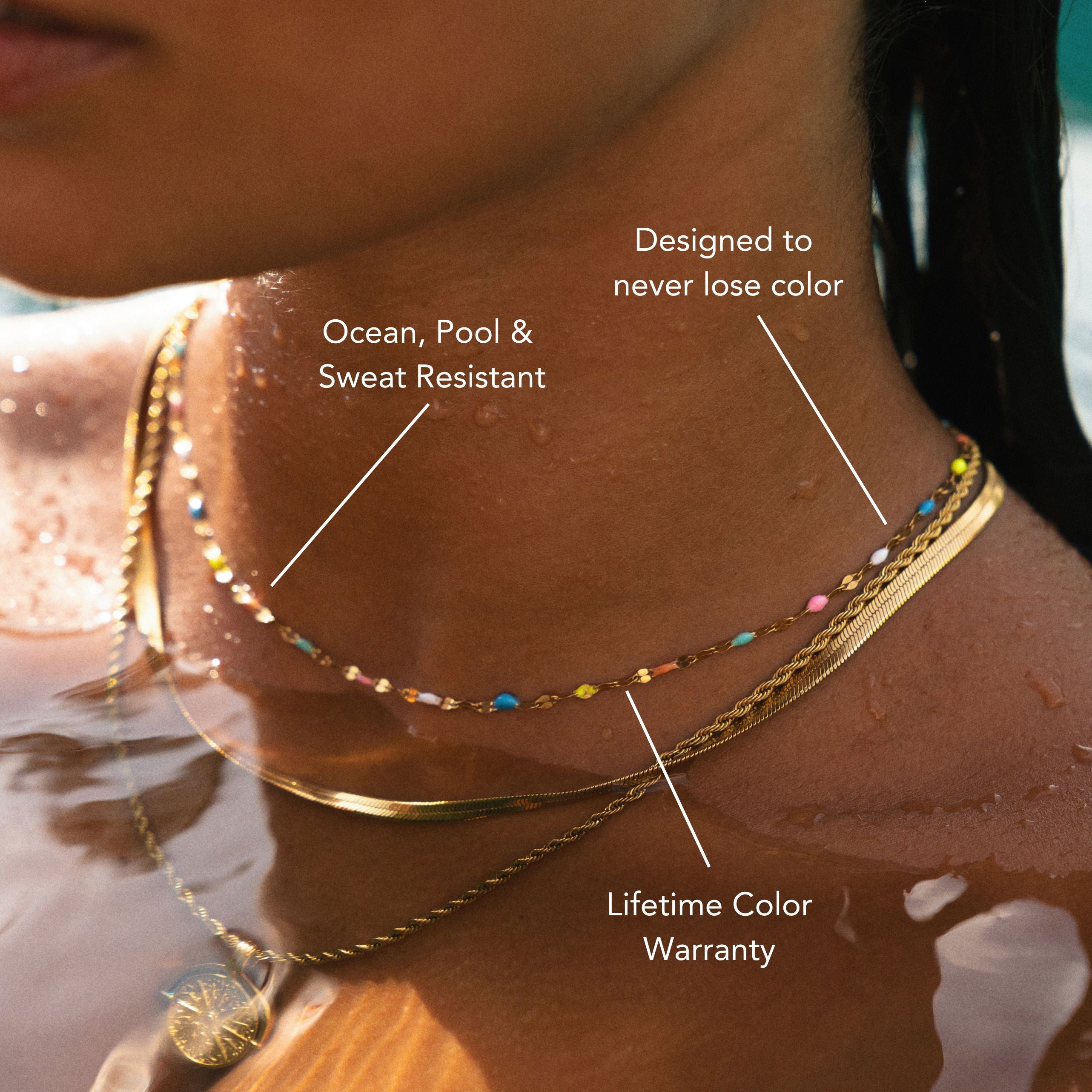




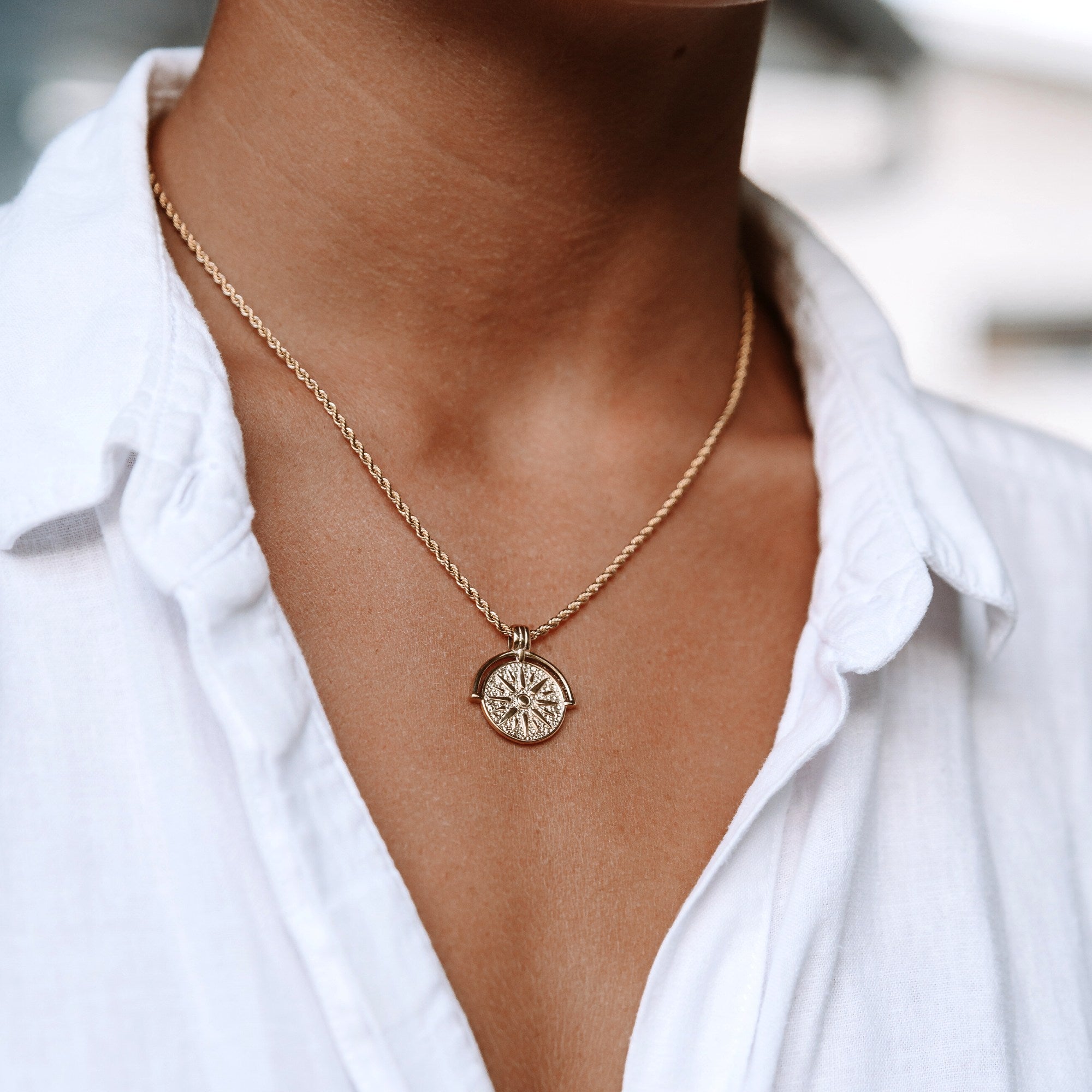

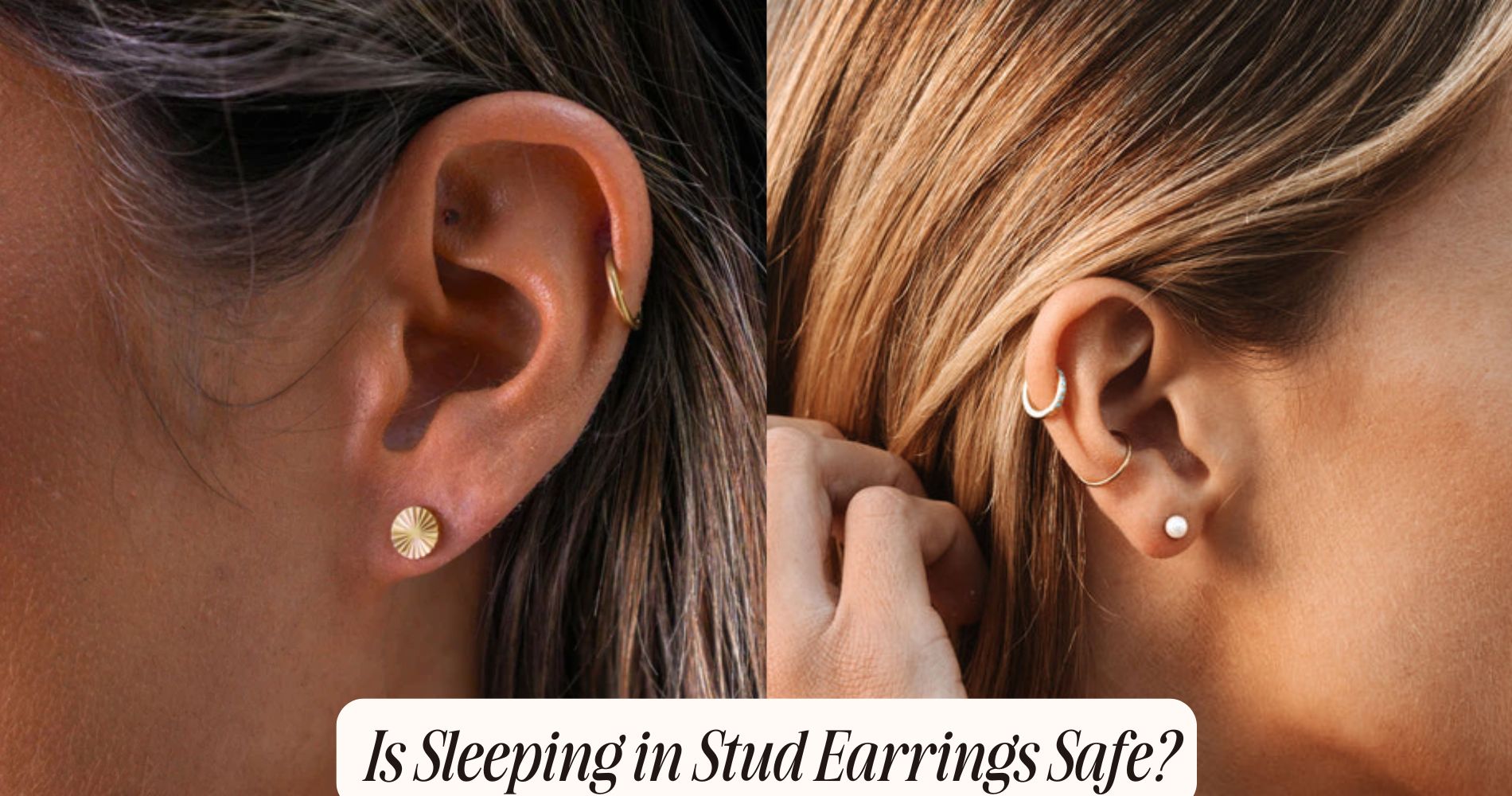





Leave a comment
This site is protected by hCaptcha and the hCaptcha Privacy Policy and Terms of Service apply.